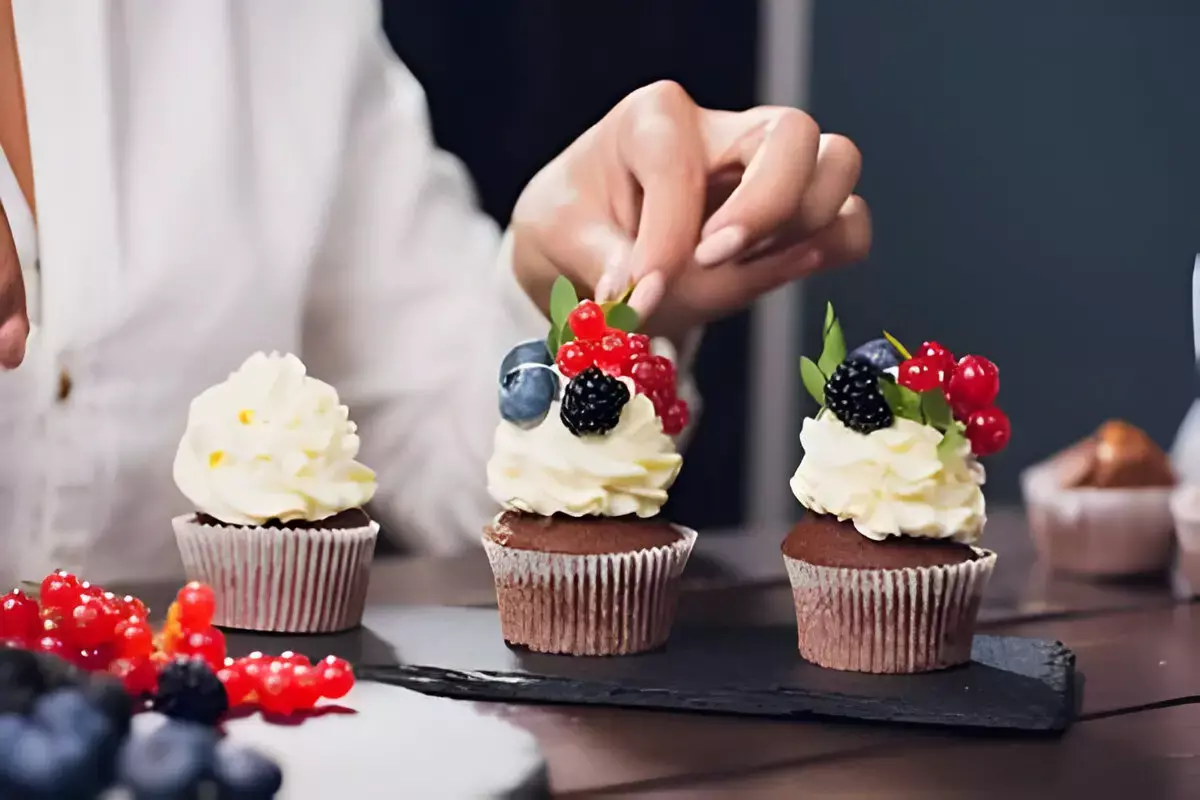In the quest for delightful treats that cater to dietary needs, gluten-free cupcakes have emerged as a favorite. These tiny desserts pack the same flavorful punch as their traditional counterparts, without the gluten that can cause discomfort for those with sensitivities or celiac disease. This article will delve into the art of making gluten-free cupcakes, covering everything from basic ingredients to creative variations. Whether you’re a seasoned baker or new to the gluten-free scene, this comprehensive guide promises to enlighten and inspire your next baking adventure.
The Essentials of Gluten-Free Baking
Understanding Gluten-Free Flours
When it comes to gluten-free cupcakes, the choice of flour is paramount. Unlike traditional baking, gluten-free recipes often require a blend of flours to mimic the texture and structure that gluten provides. Rice, almond, and coconut flours are popular choices, each bringing its unique flavor and baking properties to the table.
Key Ingredients for Moisture and Flavor
To achieve that perfect cupcake texture, moisture is key. Ingredients like buttermilk (or its dairy-free alternatives), applesauce, and even avocados can add the necessary moisture without weighing down the batter. Flavorings such as vanilla extract or citrus zest can elevate the taste, making each bite a delightful experience.
The Role of Binders in Gluten-Free Baking
Binders like xanthan gum or guar gum are crucial in gluten-free baking to prevent the cupcakes from crumbling. These ingredients act as a gluten substitute, providing the elasticity and stickiness that gluten would typically offer.
FAQ: What are gluten-free cupcakes made of?
Gluten-free cupcakes are crafted from a mix of gluten-free flours, binders to provide structure, and various ingredients to ensure moisture and flavor. This blend ensures a delicious, tender crumb that rivals any traditional cupcake.
For further inspiration, consider exploring articles like “Gluten-Free Cupcakes: A Comprehensive Guide to Delicious Treats” on MarvelRecipes, which dive deeper into the world of gluten-free baking.
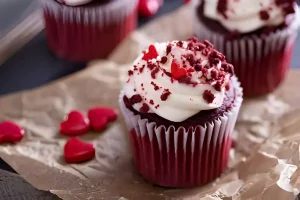
Perfecting the Gluten-Free Cupcake Batter
Crafting the perfect batter is the cornerstone of delicious gluten-free cupcakes. This section will guide you through the process, ensuring your cupcakes are light, fluffy, and irresistibly tasty.
The Creaming Method: A Secret to Fluffiness
Starting with the creaming method can make all the difference. By beating the butter (or oil) with sugar until light and fluffy, you introduce air into the batter, leading to a lighter cupcake. Don’t skimp on this step; the texture of your cupcakes will thank you!
Gradual Mixing: The Key to Consistency
When combining your dry and wet ingredients, a gentle and gradual approach works best. Alternating between the gluten-free flour blend and the liquid ingredients prevents the batter from becoming too dense. This step-by-step mixing ensures each ingredient is fully incorporated, resulting in a smooth, consistent batter.
Customizing Your Cupcakes
One of the joys of baking gluten-free cupcakes is the endless variety of flavors and additions at your disposal. From classic vanilla and rich chocolate to more adventurous options like lavender or matcha, the possibilities are limitless. Fold in fresh berries, chocolate chips, or nuts to add texture and depth to your cupcakes.
Internal Linking Opportunity
For those looking to expand their gluten-free dessert repertoire, consider linking to MarvelRecipes’ article on “Mini Cupcakes: Exploring Their Enchanting History”. This piece not only delves into the charming background of mini cupcakes but also provides additional baking tips and ideas that can be applied to gluten-free versions.
By adhering to these detailed steps and embracing the versatility of gluten-free ingredients, you’re well on your way to creating gluten-free cupcakes that are sure to impress at any occasion.
Creative Variations and Customizations
Exploring Flavors Beyond Vanilla
While vanilla is a beloved classic, the world of gluten-free cupcakes offers a kaleidoscope of flavors waiting to be explored. Chocolate, lemon, red velvet, and even exotic combinations like lavender-honey or chai-spiced cupcakes can add an exciting twist to your gluten-free baking repertoire.
Incorporating Fruits and Nuts
Adding fruits and nuts into your gluten-free cupcakes not only introduces new textures but also enhances the overall taste profile. Blueberries, raspberries, or chopped apples can add a fresh burst of flavor, while nuts like almonds or walnuts provide a satisfying crunch.
Alternative Sweeteners for Health-Conscious Bakers
For those looking to reduce refined sugar in their diets, gluten-free cupcakes can be sweetened with alternatives like honey, maple syrup, or agave nectar. These natural sweeteners can add depth to the flavor while catering to dietary preferences.
Decorations and Toppings: The Finishing Touch
The decoration is where creativity shines in cupcake making. Frostings made from cream cheese, buttercream, or dairy-free alternatives can be flavored and colored in endless ways. Edible flowers, gluten-free sprinkles, and fruit slices are just a few ideas to make your cupcakes stand out.
For bakers looking to expand their gluten-free baking knowledge, an article like “Small Cupcake Delights: Exploring Recipes, Tips, and History” on MarvelRecipes.com could provide additional insights and ideas, enriching your baking journey with historical context and innovative recipes.
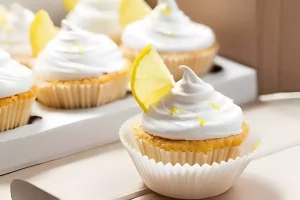
Mastering Gluten-Free Cupcake Frosting and Fillings
Crafting the Perfect Gluten-Free Frosting
The frosting on top of a cupcake isn’t just about sweetness; it’s about bringing a complementary texture and flavor to the treat. For gluten-free cupcakes, options abound from classic buttercream to silky mousse, each offering a unique finish. Key is to ensure your frosting ingredients are gluten-free, especially when using packaged products like powdered sugar.
Innovative Gluten-Free Fillings
A surprise filling can turn a simple cupcake into a gourmet experience. Fillings like homemade fruit jams, lemon curd, or chocolate ganache add an unexpected burst of flavor with each bite. The trick is to core the cupcake gently and fill it without compromising the structure.
Dairy-Free Alternatives for Inclusive Baking
In catering to various dietary needs, consider dairy-free alternatives for frostings and fillings. Coconut cream, dairy-free chocolate, and cashew-based creams can create rich, indulgent toppings and fillings that everyone can enjoy.
Decoration Techniques for Show-Stopping Cupcakes
Beyond the flavor, the visual appeal of cupcakes can make them truly special. Techniques like piping intricate designs, creating ombre effects with frosting, or adding edible glitter can elevate your gluten-free cupcakes to artistry levels.
Diving deeper into gluten-free dessert crafting, you might find valuable tips and inspiration from resources like “Gluten-Free Cupcakes: Taste Test Exploring Flavor and Texture” on MarvelRecipes.com. Such articles can broaden your understanding of how various gluten-free ingredients interact, affecting the final taste and texture of your cupcakes.
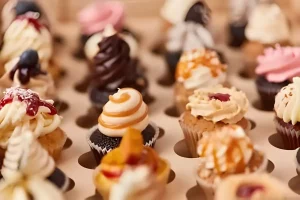
Navigating Common Gluten-Free Cupcake Challenges
Addressing Texture Issues
One of the main hurdles in gluten-free cupcake baking is achieving the right texture. Without gluten, cupcakes can sometimes turn out too dense or crumbly. To combat this, ensure your batter has the right balance of wet to dry ingredients and don’t skimp on binders like xanthan gum, which help mimic gluten’s elasticity.
Maintaining Cupcake Moisture
Dryness can often plague gluten-free baked goods. To keep your cupcakes moist, ingredients like applesauce, yogurt, or pumpkin puree can be lifesavers. These not only add moisture but also contribute to the flavor profile of your cupcakes.
Preventing Cupcakes from Falling Flat
Gluten-free cupcakes sometimes struggle to rise, leading to flat or sunken tops. The key is in the leavening agents. Make sure your baking powder and soda are fresh, and don’t overmix the batter, as this can deflate the air bubbles necessary for a light, fluffy texture.
Flavor Enhancement Techniques
Gluten-free flours can sometimes have a bland or off-putting taste. To ensure your cupcakes are delicious, don’t hold back on flavorings. Vanilla extract, citrus zests, spices, and extracts can mask any undesirable flavors from gluten-free flours and elevate the overall taste of your cupcakes.
To further enhance your gluten-free baking skills, exploring articles like “Gluten-Free Living: Your Comprehensive Guide” on MarvelRecipes.com can provide deeper insights into gluten-free ingredients and their unique properties, helping you navigate and overcome common baking challenges with ease.
The Art of Presentation and Serving Gluten-Free Cupcakes
Creative Display Ideas
Presenting your gluten-free cupcakes in an eye-catching manner can turn them from simple treats into the centerpiece of your gathering. Using tiered cupcake stands, colorful liners, or thematic decorations based on the occasion adds a festive touch that enhances the overall experience.
Pairing with Gluten-Free Beverages
Complementing your cupcakes with the right beverage can elevate the tasting experience. Consider pairing your gluten-free cupcakes with gluten-free teas, coffees, or dairy-free milk alternatives. The right drink can enhance the flavors of your cupcake and offer a complete sensory experience.
Packaging Tips for Gifting
If you’re sharing your cupcakes as gifts, consider packaging options that protect their delicate frosting while showcasing their beauty. Clear boxes, personalized tags, and ribbons can turn your cupcakes into thoughtful, handcrafted presents.
Ensuring Freshness for Events
Timing is crucial when preparing gluten-free cupcakes for an event. Baking a day in advance and storing them properly can maintain their freshness without compromising the quality. Airtight containers kept in a cool, dry place can help preserve their texture and flavor until it’s time to serve.
For those interested in diving deeper into the intricacies of cupcake creation and presentation, MarvelRecipes.com offers a wealth of resources, including articles like “Make Mini Cupcakes: Your Guide to Bite-Sized Delights”. These resources can provide additional inspiration and techniques for crafting and displaying your gluten-free creations.
In enhancing the depth of our discussion on gluten-free cupcakes, it’s beneficial to reference information from recognized international organizations. These include resources on gluten-free dietary guidelines from the Celiac Disease Foundation, insights into gluten-free baking from The Gluten Intolerance Group, and innovative baking techniques from The International Culinary Center. These links offer a wealth of knowledge for both novice and experienced bakers seeking to refine their gluten-free baking skills.
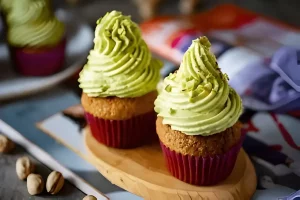
Troubleshooting and FAQs in Gluten-Free Cupcake Baking
Baking gluten-free cupcakes can sometimes feel like navigating through a maze, with various challenges and questions arising along the way. This section aims to demystify common issues and provide answers to frequently asked questions, ensuring your baking journey is as smooth as a perfectly frosted cupcake.
Common Gluten-Free Cupcake Baking Challenges
- Cupcakes Too Dense or Heavy: This is often due to the flour blend used. Ensure your gluten-free flour mix is light and includes a combination of different flours and starches to mimic the texture of gluten-containing flour.
- Crumbly Texture: A lack of binders like xanthan gum or guar gum can lead to a crumbly texture. These ingredients help mimic gluten’s binding properties, essential for a cohesive crumb.
- Uneven Rising: Inconsistent leavening can result from expired baking powder or soda, uneven mixing, or filling the cupcake liners inconsistently. Double-check your leaveners’ freshness and be precise with your mixing and portioning.
FAQs: Addressing Your Gluten-Free Cupcake Queries
What are gluten-free cupcakes made of?
Gluten-free cupcakes are crafted from a blend of gluten-free flours (such as rice, almond, or coconut flour), a binder like xanthan gum to provide structure, and other common baking ingredients adjusted for gluten sensitivity.
Can I substitute any gluten-free flour in my cupcake recipe?
Not all gluten-free flours are created equal. It’s best to use a blend designed for baking, or follow a recipe’s specific flour recommendation to ensure the best results.
How do I store gluten-free cupcakes to keep them fresh?
Store them in an airtight container at room temperature for a few days. For longer storage, they can be frozen without the frosting and thawed before serving.
Why did my cupcakes sink in the middle?
This could be due to opening the oven door too early, overmixing the batter, or using expired leaveners. Make sure to mix just until the ingredients are combined and check the expiration dates on your baking powder or soda.
For those looking to delve deeper into gluten-free baking and find more detailed guidance, resources like “Gluten-Free Living: Your Comprehensive Guide” on MarvelRecipes.com can be invaluable. Such articles offer a deeper understanding of gluten-free ingredients and techniques, helping you navigate the complexities of gluten-free baking with confidence.

